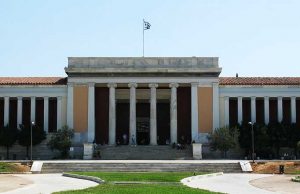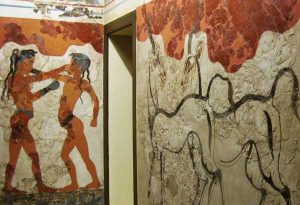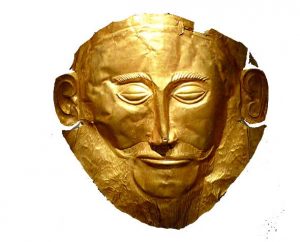Iformation about the National Archaeological Museum of Athens
 The National Archaeological Museum of Athens Greece, is one of the most important museums in the world in the field of ancient art with finds from all over the Greek world.
The National Archaeological Museum of Athens Greece, is one of the most important museums in the world in the field of ancient art with finds from all over the Greek world.
The rich collections of the National Archaeological Museum, which list more than 11,000 exhibits, offer the visitor a panorama of ancient Greek culture from the beginning of prehistory to late antiquity.
The museum houses five large permanent collections and has (among other things) a rich photographic archive, a library with many rare editions, modern object maintenance workshops, model workshops and a photography workshop.
Financing and construction

The first archeological museum in Greece had already been founded in 1829, by Ioannis Kapodistrias and was housed in the Orphanage of Aegina.
In the following decades, however, the transfer of the capital to Athens and the large number of finds that came to light from the excavations, made the urgent need for an organized national museum in the city.
For many years proposals were made about the location and plans of the building, both by Greek and foreign architects, who worked on the reconstruction and expansion of Athens.
The plot, on which the museum was finally built, is a donation of Eleni Tositsa, while the construction plans of the building, by the architects Ludwig Lange and Panagiis Kalkou, thet were supervised for the final configuration of the space by the architect Ernest Ziller.

The building was completed in 1889 with the delivery of the central wing and the facade, while in the years 1903-1906 another wing was added to the east.
Finally, in the period 1932-1939, the construction of a two-storey building on the east side was carried out by the architect Georgios Nomikos.
The neoclassical design of the museum is in complete agreement with the exhibits it contains. In any case, neoclassical architecture was very popular in Europe at the time the museum was built.
The transfer of antiquities
The transfer of antiquities to the National Archaeological Museum began in 1874, when the construction of the west wing was completed and while the finishing work was still going on.
By 1889, the year of the completion of the central wing, the most important ancient finds from the province had been transferred to the museum and in 1893 the gradual delivery of all the antiquities of the Archaeological Society was completed.
In addition, the museum’s collections were enriched with donations from private archaeological collections, such as the Egyptian Collection of John Demetriou (1890).
Establishment in 1893
By Presidential Decree of August 9, 1893, the National Archaeological Museum was officially established with the aim of “the study and teaching of archaeological science, the dissemination of archaeological knowledge and the development of love for the fine arts.”
The Collections were defined as follows
- Sculpture Collection
- Collection of Vases (Pottery)
- Collection of Clay and Copper Statuettes and other various ancient materials
- Collection of Inscriptions (Epigraphic Museum)
- Collection of Works from Pre-Hellenic Times
- Mycenaean Collection
- Collection of Egyptian Art Works.
Location
The Museum is located on Patision Street and next to the historic building complex of the National Technical University of Athens. ( 44, 28th of October street, Athens )
Admission tickets :
6€ from November 1st – March 31st
12€ from April 1st – October 31st
Official website https://www.namuseum.gr/en/
